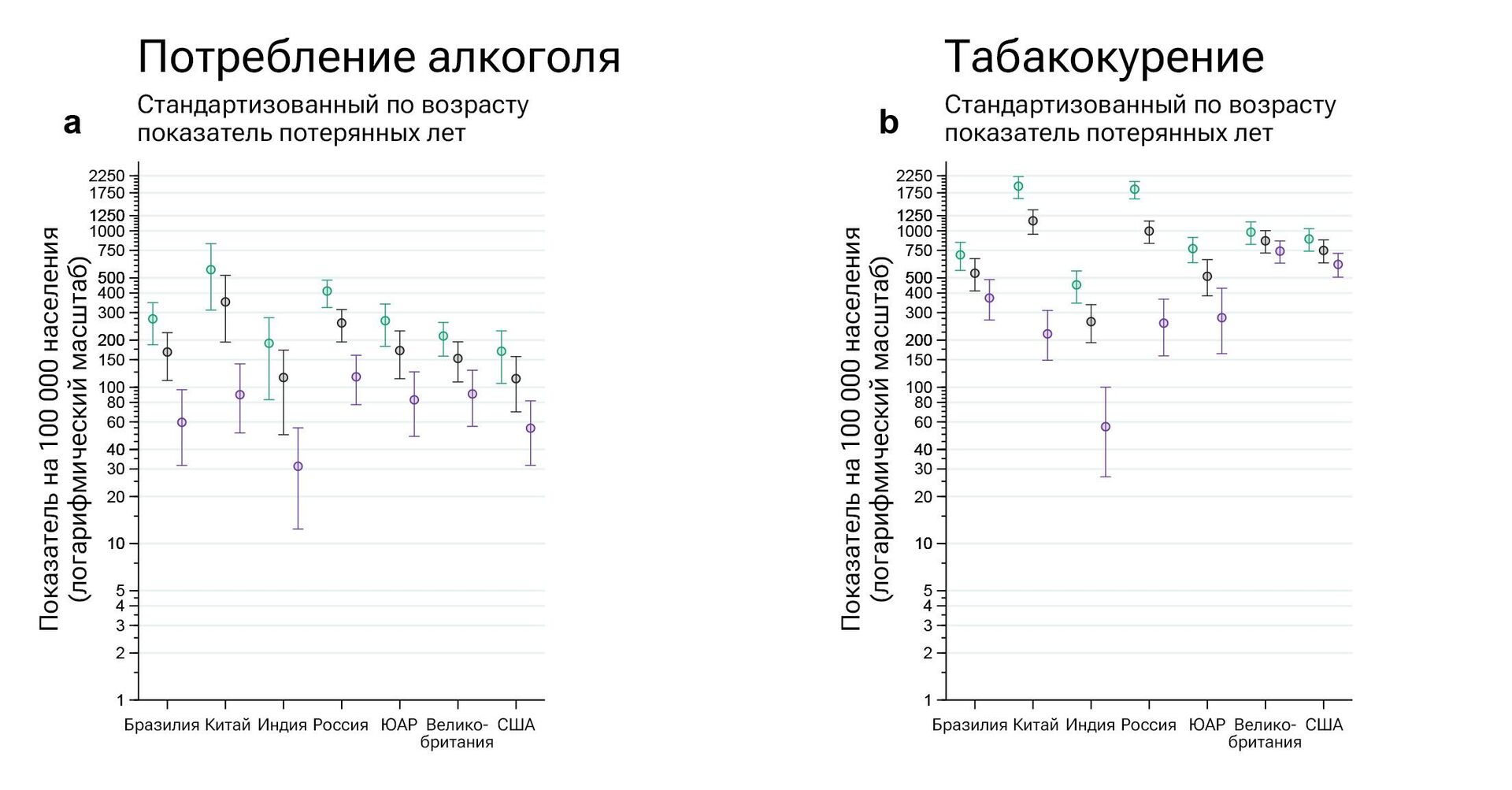
< br />
MOSCOW, November 28, Tatyana Pichugina.Scientists have analyzed the dynamics of mortality from cancer caused by something that can be eliminated. Smoking-related cancers claim the most lives. In 2020, this is 1.3 million deaths in seven large countries, including Russia. Next come alcohol, excess weight and human papillomaviruses.
Under the burden of cancer
In Russia, mortality from cancer is higher than the average in Europe, points out Candidate of Medical Sciences Anton Barchuk , oncologist from the European University and ITMO. In work done at the University of Tampere (Finland), he analyzed the situation with breast and cervical cancer among women in the northwestern regions of the country, approximately 13 million people. The basis was data collected in population-based cancer registries.
Barchuk found: the number of diagnoses (standardized by age) of breast cancer increased from 33 in 1993 to 47 in 2013 per hundred thousand population per year, cervical cancer — from 10.6 to 14.2. The mortality rate in the first case decreased from 17.6 to 15.7, and in the second it increased from 5.6 to 6.7.
“This indicates the need for priority screening and vaccination programs,” says researcher.

He also predicted the damage from these two types of cancer. To do this, I used an indicator such as years of life lost as a result of premature death — years of life lost, YLL.
According to calculations, by 2030, the YLL from cervical cancer will increase from 680 thousand to 1.2 million, while from breast cancer, on the contrary, it will decrease to 1.8 million. Combined, YLL for these two diseases will increase, leading to economic losses of eight billion dollars. However, both types of cancer can be detected in the early stages and treatment is effective. And it is quite possible to reduce the incidence of cervical cancer by vaccinating teenage girls against papillomavirus.

Youth are at risk
The other day, an international team of scientists presentedlarger and more detailed statistics on preventable types of cancer — in the eClinicalMedicine journal of The Lancet group. Among the authors is Anton Barchuk. The researchers analyzed cancer mortality in the US, UK, Russia, Brazil, India, China and South Africa. Data from 2020 was used as a basis. Four main factors have been identified that increase the risk of cancer: tobacco, alcohol, obesity and human papillomaviruses. Over the course of a year, they collectively claimed about two million lives in the regions studied, with smoking accounting for 1.3 million. Alcohol has 326 thousand.
Human papillomaviruses are extremely carcinogenic; they dramatically increase the risk of cancer of the cervix and other genital organs. These diseases accounted for 190 thousand deaths. This is less than from obesity — 208 thousand. But according to YLL it is more — four million versus three. The fact is that papillomavirus mainly affects sexually active young people. In South Africa and India, it is the second leading cause of premature death from cancer after smoking.
< br />
Cancer of bad habits
In the mid-20th century, half of the adult population in America and Great Britain smoked. By the 2020s, this figure had dropped to 13 percent. However, premature mortality from cancer caused by smoking remains the highest. Cumulatively, this is more than 20 million lost years. Moreover, in Russia and China there are much more smokers, half of them are men, the authors of the study emphasize.
“Millions of deaths from cancer on the planet can be prevented. The greatest effect will be achieved by preventing smoking,” the press service quotes the director as saying Cancer Research UK by Ian Walker.
Alcohol abuse and excess weight create problems. Economically developed countries are gripped by an epidemic of obesity.
“And in Russia the situation is now comparable to the United States and worse than in Europe,” scientists point out.
The number of premature deaths from cancer associated with alcohol and tobacco is higher among men in all countries. And the weaker sex is more at risk of cancer due to excess weight and papillomavirus.

























































Свежие комментарии